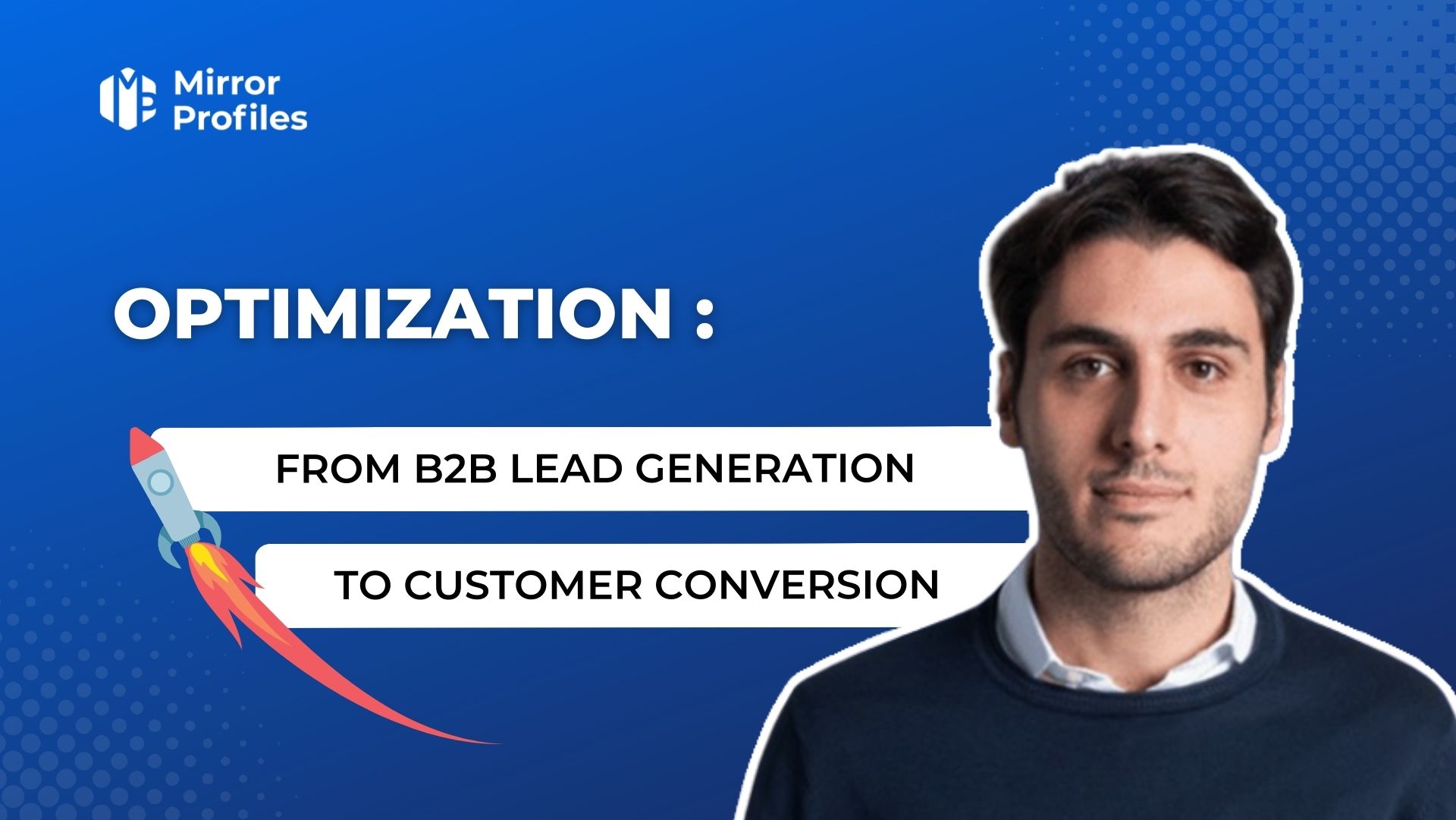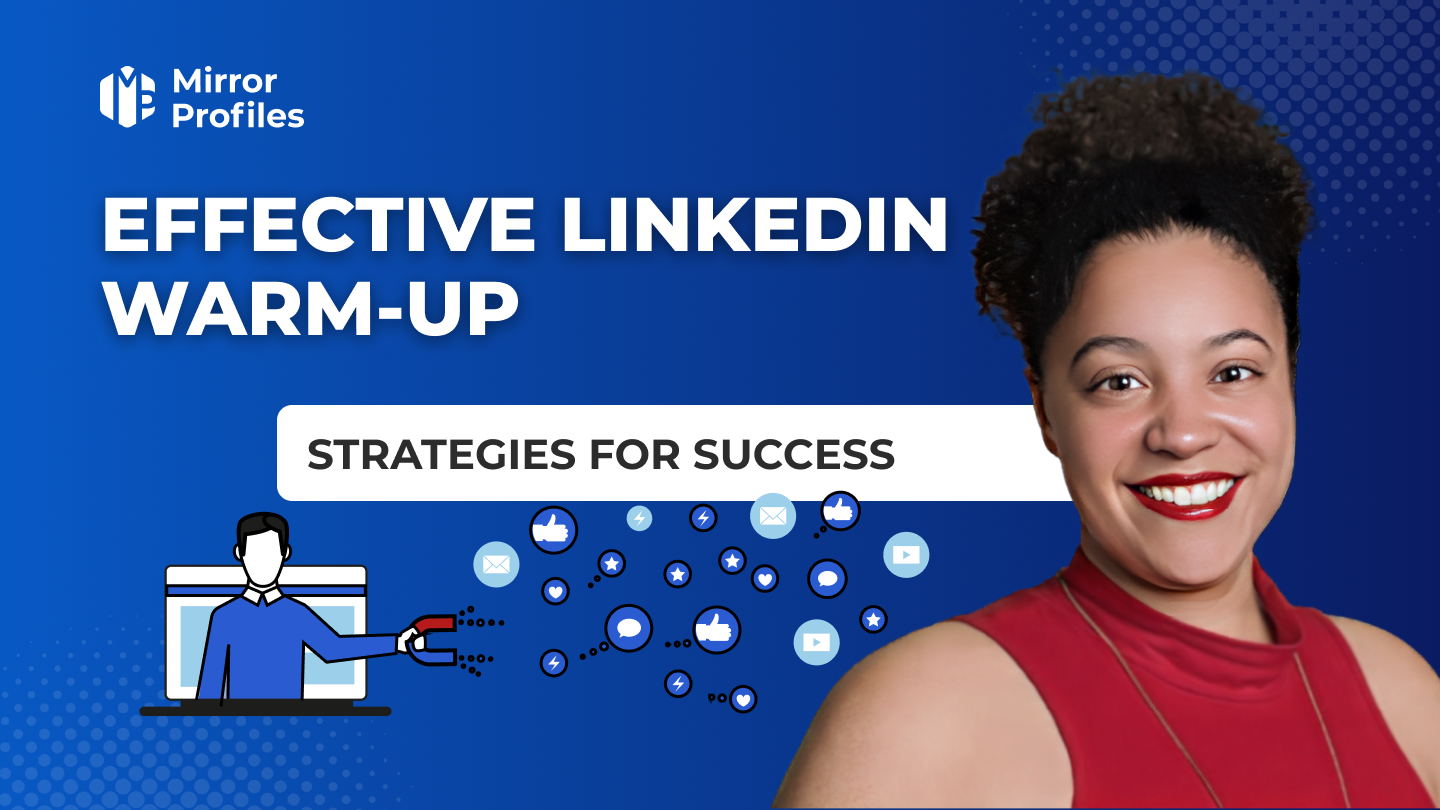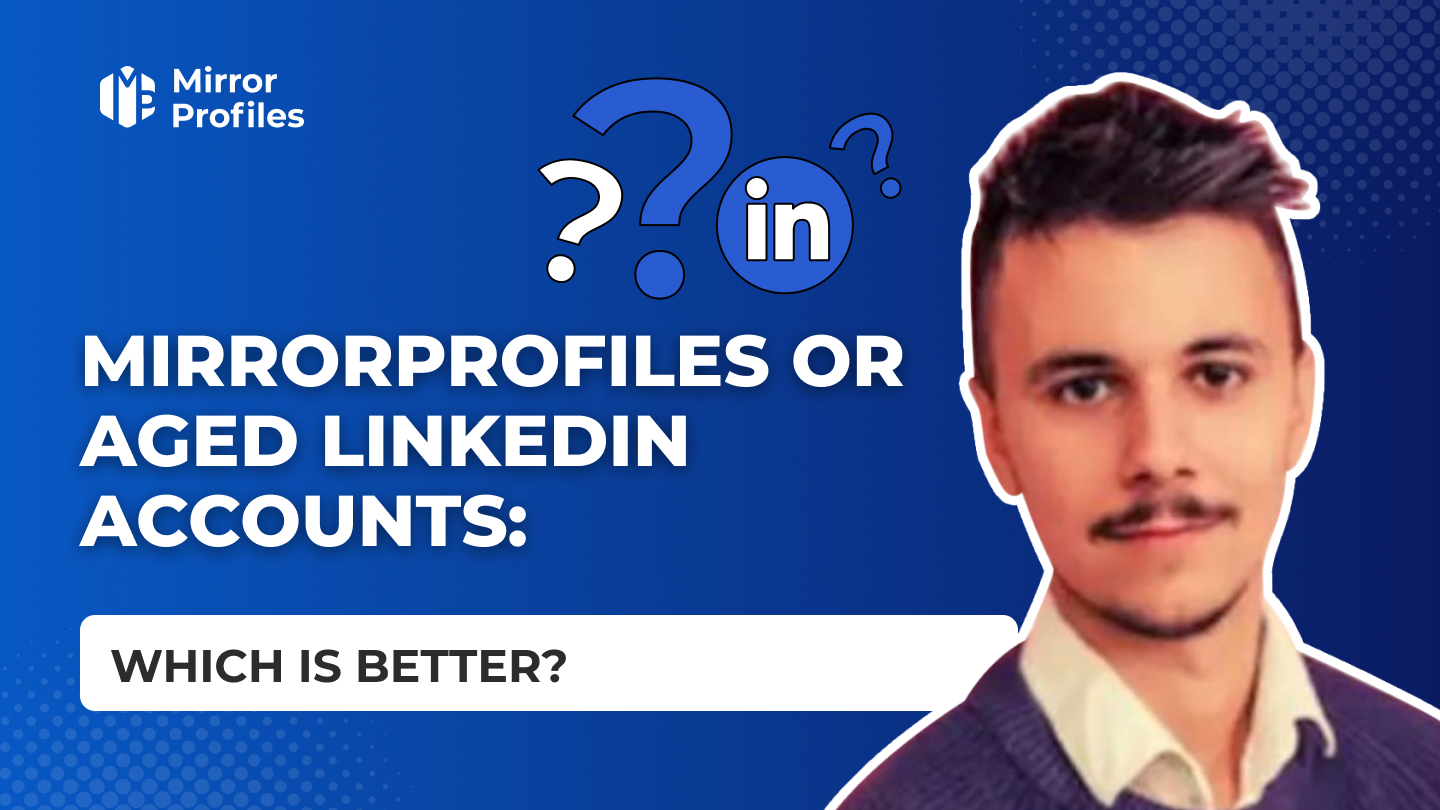Introduction
Prospecting for B2B leads is crucial for companies targeting professional customers. The formula is simple: no leads, 0 customers; no customers, 0 revenues. But what’s the recipe for improving lead generation and turning them into customers? We’ll explore the best practices and essential tools for attracting, capturing, nurturing and converting quality B2B leads.
This article details the fundamental steps to effective B2B lead generation, from accurately understanding your target audience, to personalized management of your prospects and leads, for better conversion on LinkedIn. We share proven strategies and examples of tools you can adopt to boost your lead generation and increase your conversion rates. First of all, you’ll find different definitions of prospects and leads on the Internet.
In this article, here are the definitions that have been retained (and which, for me, are the right ones). A prospect is a person corresponding to your customer typology for whom you have a contact file (email or telephone or Linkedin URL) who has not yet expressed a wish to work with you. A lead is a person who corresponds to your customer typology and who has expressed a wish to work with you.
Whether you’re a lead generation, inbound marketing or marketing automation professional, here you’ll find sound advice on how to optimize your b2b lead conversion and generate leads through linkedin, i.e. fine-tune your B2B lead generation strategy and successfully convert them into loyal customers.
Step 1: Identify and understand your target audience for effective lead generation
The key to boosting your B2B lead generation lies in identifying and thoroughly understanding your target audience. This is what we call targeting in B2B. Without this knowledge, it’s almost impossible to attract quality leads. In fact, each target has an impact on the rest of your acquisition funnel. To understand this, we need to keep this question in mind: “Would you talk the same way to your baker as you would to the head of Total?” There are 2 main points that differentiate them, the contact of the baker we can easily obtain via google. The head of Total is another matter. Once the 2 contacts have been obtained, they become prospects. You contact them with a different message, and if they reply that they’re interested, they become a lead.
You need to have a clear understanding of who they are, what their specific needs are, what motivates them, any obstacles they face and the process they go through to make their purchases. To achieve this, it is essential to :
Define the ideal customer profile (ICP)
The Ideal Customer Profile (ICP) is a detailed representation of the type of company that would benefit most from your offer, and who would be most likely to buy it. This encompasses various criteria such as company size, sector of activity, sales, geographical location, technologies used, among others. With a well-established KPI, you can segment your market strategically and devote your resources more effectively to the most promising prospects. To define your KPI, look at your existing customers, observe your competitors and conduct surveys or interviews with your target market. A word of advice: don’t be too specific in your KPI. On the Internet, we see examples of KPIs that are delirious, knowing what your astro sign is or your favorite brand of rusk doesn’t matter to us. Have criteria that match your sales pre-qualification AND, above all, that you’re capable of finding. In other words, you need to be able to scrape (e.g. Linkedin scraper), to build up a well-filled prospecting file enriched with contact details.
Using data for precise targeting
Once you’ve established your KPI, you need to leverage the available data to precisely target these prospects. This data enables you to personalize your marketing messages, choose the most relevant communication channels and evaluate the impact of your marketing strategies. Consider the use of internal databases such as your customer relationship management (CRM) system, your website analytics, your social networking activities, and external ones such as public databases, professional directories and dedicated prospecting tools. The goal is to aggregate critical information about your prospects, including their name, e-mail address, job title, company name, industry sector, and more.
A prospecting database is measured by the number of “acquisition channels”. In other words, if on 1 line of your database there’s the professional email, phone number and Linkedin URL, then your prospecting file is enriched because you can contact them via 3 different acquisition channels. Indeed, even if on paper your prospects should look the same, each person is different and some will respond more on Linkedin than by e-mail or phone, and vice versa.
In addition, the other columns will enable you to personalize the content of your messages, improve your catchphrases and thus convert more prospects into leads.
Engaging prospects with personalized content
Appropriate, personalized content is essential to capture your prospects’ attention and encourage them to take the plunge. This content needs to be tailored to your audience, their position in the buying cycle and their interests. Your content should be useful and enriching, whether it’s intended to educate, inform, inspire or even entertain. Vary the formats – blog articles, white papers, webinars, podcasts, videos – and make sure you share them on the platforms most suitable and used by your target audience, such as your website, social networks and e-mail. In B2B, LInkedin is crucial for this communication lever: between Linkedin posts and Linkedin comments, your sales reps or MirrorProfiles accounts are your best relays of notoriety.
Step 2: Use the right strategies and tools to capture qualified leads
To develop your B2B lead generation effectively, it’s crucial to adopt the right strategies and tools to attract qualified prospects. The aim is to channel prospects’ interest by encouraging them to take meaningful actions such as making appointments/demos, filling in forms, downloading resources, registering for events, and so on. Here’s how to succeed:
Inbound strategies: content, SEO and social networks
The inbound approach consists of naturally attracting prospects with quality content that responds to their questions and needs. SEO, or Search Engine Optimization, is essential for improving your website’s positioning in search engine results, thus increasing your visibility and web traffic. Using social networks is also a strategic way of sharing your content, building an engaged community and reinforcing your brand image.
Outbound strategies: active prospecting and targeted advertising
In contrast, outbound strategies aim to go directly to potential leads with tailor-made messages. Active prospecting involves contacting prospects via email, phone calls or Linkedin messages, using specialized tools to help find and qualify leads. For example, MirrorProfiles lets you rent Linkedin profiles with over 500 contacts and 3 months’ seniority, giving you unrivalled prospecting power. In 2024, this is the only solution that allows you to exceed the 100 weekly connection requests imposed by Linkedin on 1 Linkedin account.
B2B outbound lead generation campaigns are often the most effective way to generate growth. I recommend reading this article if you’re interested in the subject. In my view, 70% of your customers should come from word-of-mouth and inbound marketing. These famous 70% enable your company to survive: to pay salaries, suppliers, taxes, etc. The remaining 30% should come from outbound marketing, and this is where the new, more lucrative deals are hidden, or the deals that will force you to improve the quality of your value proposition.
Targeted advertising campaigns, on the other hand, involve delivering personalized ads on platforms such as Google Ads, LinkedIn Ads or Facebook Ads, precisely targeting your audience.
Optimize landing pages and calls to action (CTAs)
Landing pages must be designed to turn visitors into leads. They need to be intuitive, punchy, and present a tempting offer that encourages the exchange of contact information. As for calls to action (CTA), these are the key elements inviting action, such as “Download the free guide”, “Sign up for the webinar”, or “Request a demo”. It’s vital that they’re prominently displayed, with a contrasting color and an imperative message.
Automate lead gathering with dedicated tools
Automation is a lever for optimizing your time and lead generation. There are specialized tools for setting up forms, pop-ups, chatbots or quizzes that integrate directly into your website and social networks. These tools capture information from prospects and automatically integrate it into your CRM. They also make it easier to track visitor behavior on your site and send personalized messages based on their interactions.
With regard to this section on tools for B2B lead generation, I refer you to our Top 10 sales prospecting tools. It will give you the perfect stack of tools to increase your production of qualified leads.
Step 3: Nurture and convert leads into customers with personalized follow-up
The third crucial phase in B2B lead generation consists in nurturing and converting leads into customers through customized follow-up. Maintaining a solid relationship with your leads is essential to turning them into loyal customers and guiding them towards the act of buying. To achieve this, you will need to :
Set up a lead scoring system to prioritize efforts
Lead scoring is a technique for assigning a score to each prospect according to his or her profile and behavior. This score indicates the interest and maturity of the lead, helping to determine whether it should be sent directly to the sales team or whether it requires further nurturing. Lead scoring helps to prioritize sales efforts, increase efficiency and improve conversion rates. For example, a good set-up of Airtable is formidable for doing this. If you’d like to find out more, I’d advise you to make an appointment with Stepward, the best Airtable + Lead generation agency on the market.
Marketing automation campaigns for lead nurturing
Marketing automation uses software or platforms to automatically execute marketing tasks or scenarios such as sending emails, delivering content or segmenting prospects. This automation enables you to target your prospects in a personalized way, sending them the right message, at the right time, via the right channel. It also enables you to maintain regular contact with your leads, consolidating their trust and helping them progress through the buying process. So don’t confuse specialized tools for turning prospects into leads with tools for turning leads into customers. The mechanics are not exactly the same. For example, for the former I’d recommend Lemlist, La Growth Machine or Hey Reach, while for the latter Brevo or Hubspot Sales are formidable. In fact, make an appointment with me for a MirrorProfiles demo. I often devote a good ten minutes of my 30 minutes to advice on the tools to use.
Customer relations: the importance of CRM in tracking interactions
CRM (Customer Relationship Management) is an essential system for tracking and managing interactions with your customers, from initial acquisition through to customer loyalty. It enables you to centralize information on prospects and customers, monitor exchanges, plan strategic actions and analyze performance. An effective CRM helps you get to know your prospects and customers better, personalize your sales approach, synchronize the work of your teams and boost customer satisfaction.
Closing techniques: how to convert interest into a buying decision
Closing is the final phase of the sales cycle, aimed at converting the customer’s interest into a firm commitment. This crucial stage requires the use of strategies adapted to the type of sale, the context and the customer’s profile. Common closing techniques include direct closing, where the customer is simply asked about his or her willingness to buy; alternative closing, where two options are offered, both leading to purchase; and proof closing, where the benefits of the product or service are demonstrated through testimonials, case studies or demos. To learn more about these techniques, the Heroes of Sales podcast is a mine of information.
Conclusion
At this stage, you’re equipped with the essential knowledge to boost B2B lead generation and conversion. You’ve mastered the techniques for identifying and targeting your ideal audience, as well as the use of relevant strategies and tools to acquire quality leads. What’s more, you know the effective ways to nurture these leads and turn them into loyal customers through a personalized follow-up approach. You’ve also explored practical examples and effective platforms for increasing your B2B lead generation and improving your conversion rates.
Now it’s time to put these tips into practice at your company. If you’re looking for specific support or recommendations, our door is always open. As an agency specializing in B2B lead generation, we’re ready to support you in developing and implementing your lead generation strategy. Contact us for a free audit and start turning your prospects into profitable customers today.
FAQ
How do you generate B2B leads?
To generate leads in the B2B sector, start by drawing your potential customers’ attention to your product or service. There are several techniques you can use to achieve this. Include forms on your website to collect their information, share useful content in exchange for their contact, work on optimizing your SEO to be better found online. Linkedin is the network where you need to be to develop both your brand awareness and your sales prospecting.
What is lead generation?
Generating leads means attracting people who are potentially interested in what you have to offer, then gathering their information to turn them into qualified prospects. To achieve this, you can use a variety of tactics, from digital marketing and direct marketing to online content creation and webinars.
How do you generate leads?
To generate leads effectively, it’s essential to captivate your target audience with relevant content and engaging offers. Make sure you also take care of your site’s SEO, optimize your advertising campaigns and your presence on social networks to facilitate conversions and lead follow-up.
How much does a lead cost?
The cost of acquiring a lead can vary considerably depending on the field of activity, the acquisition methods, the level of detail of the information collected and the rate at which these contacts turn into customers. The average B2B lead costs between €53 and €105, but this varies from industry to industry. It’s impossible to really predict the cost of a lead. That’s why lead generation agencies are less and less results-based.





